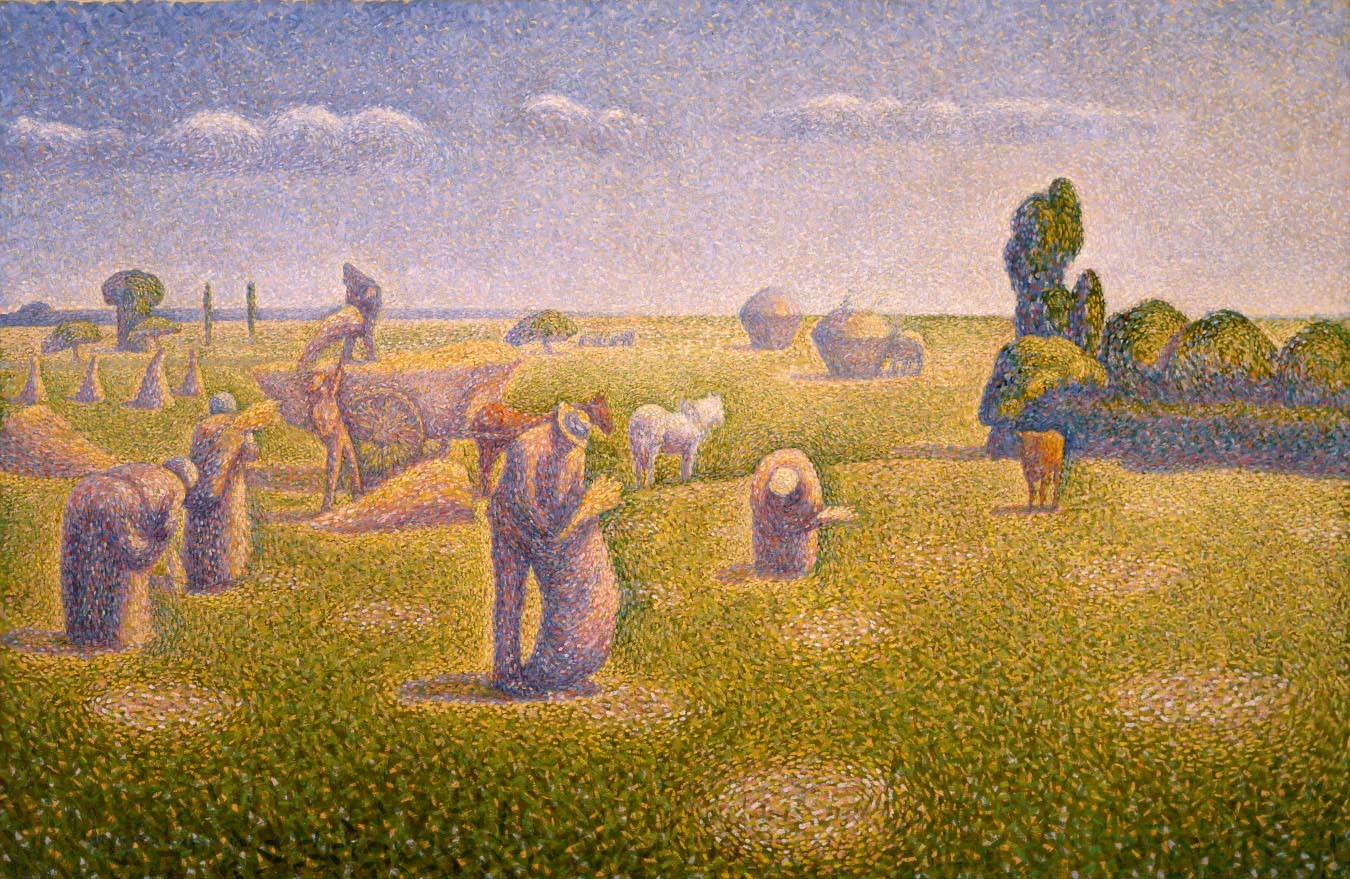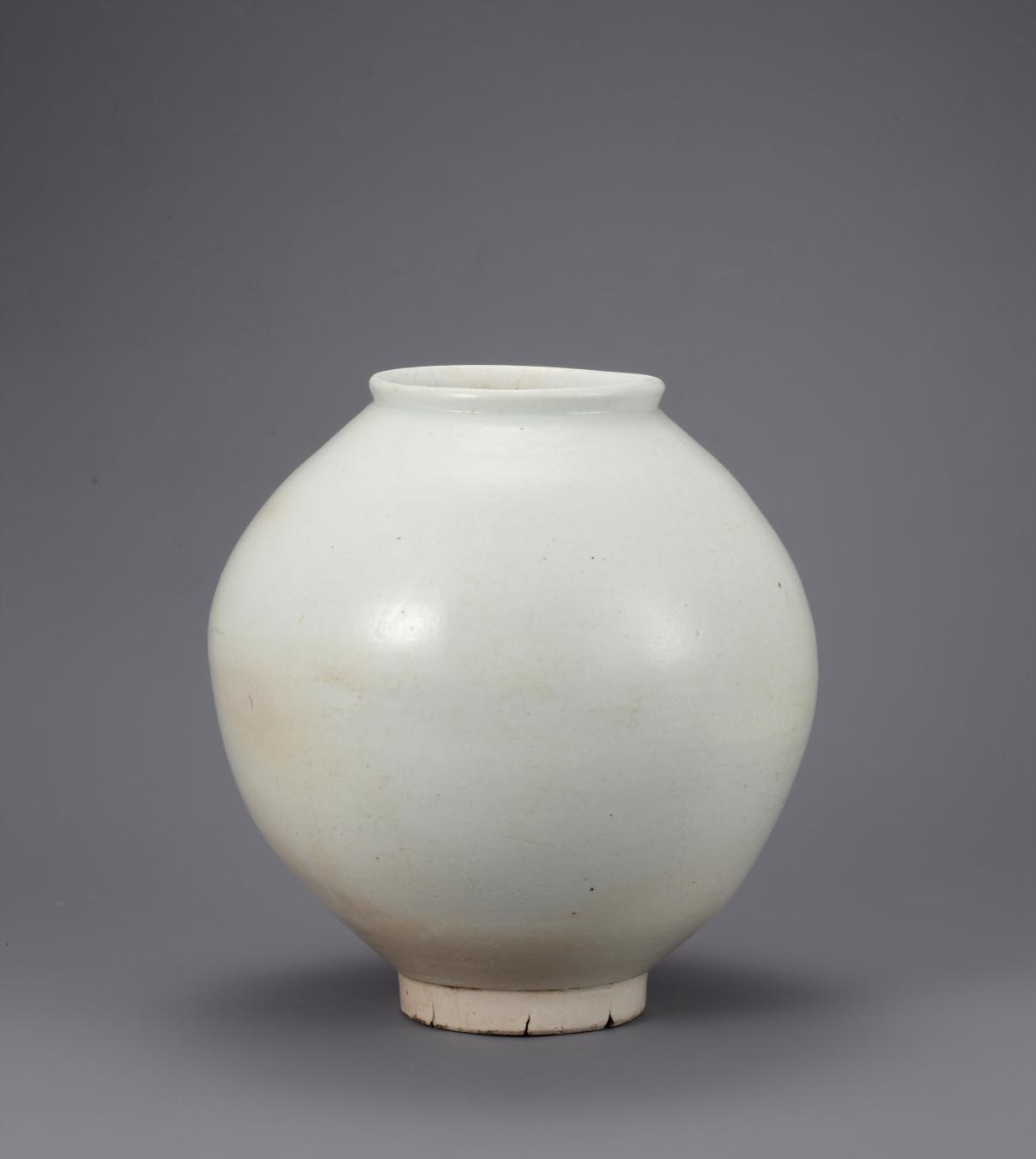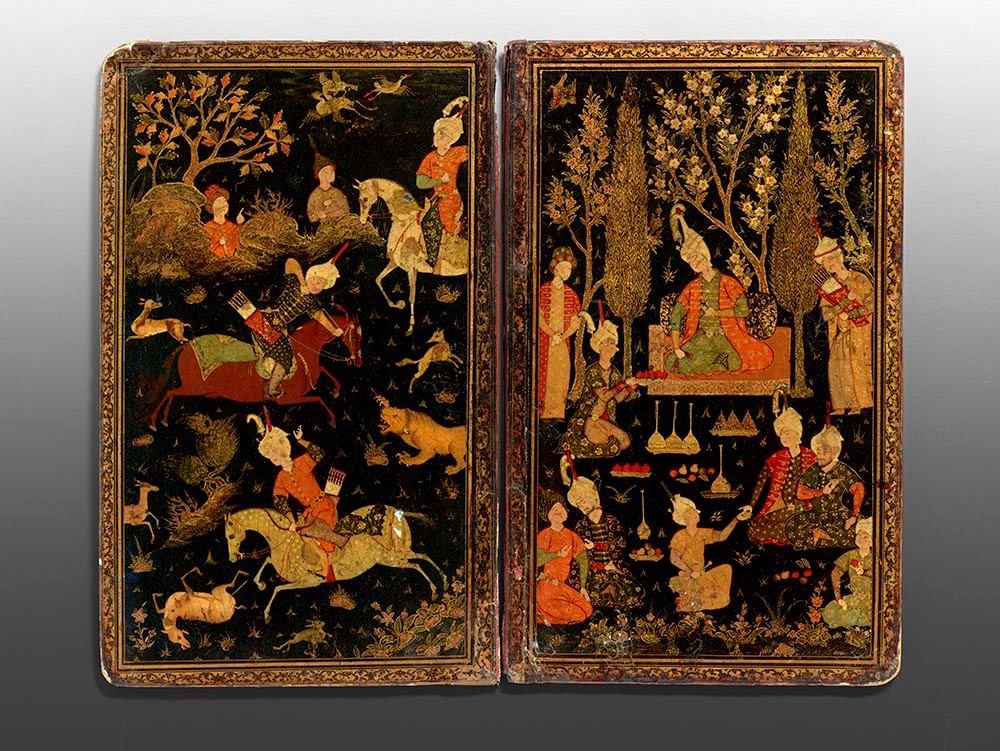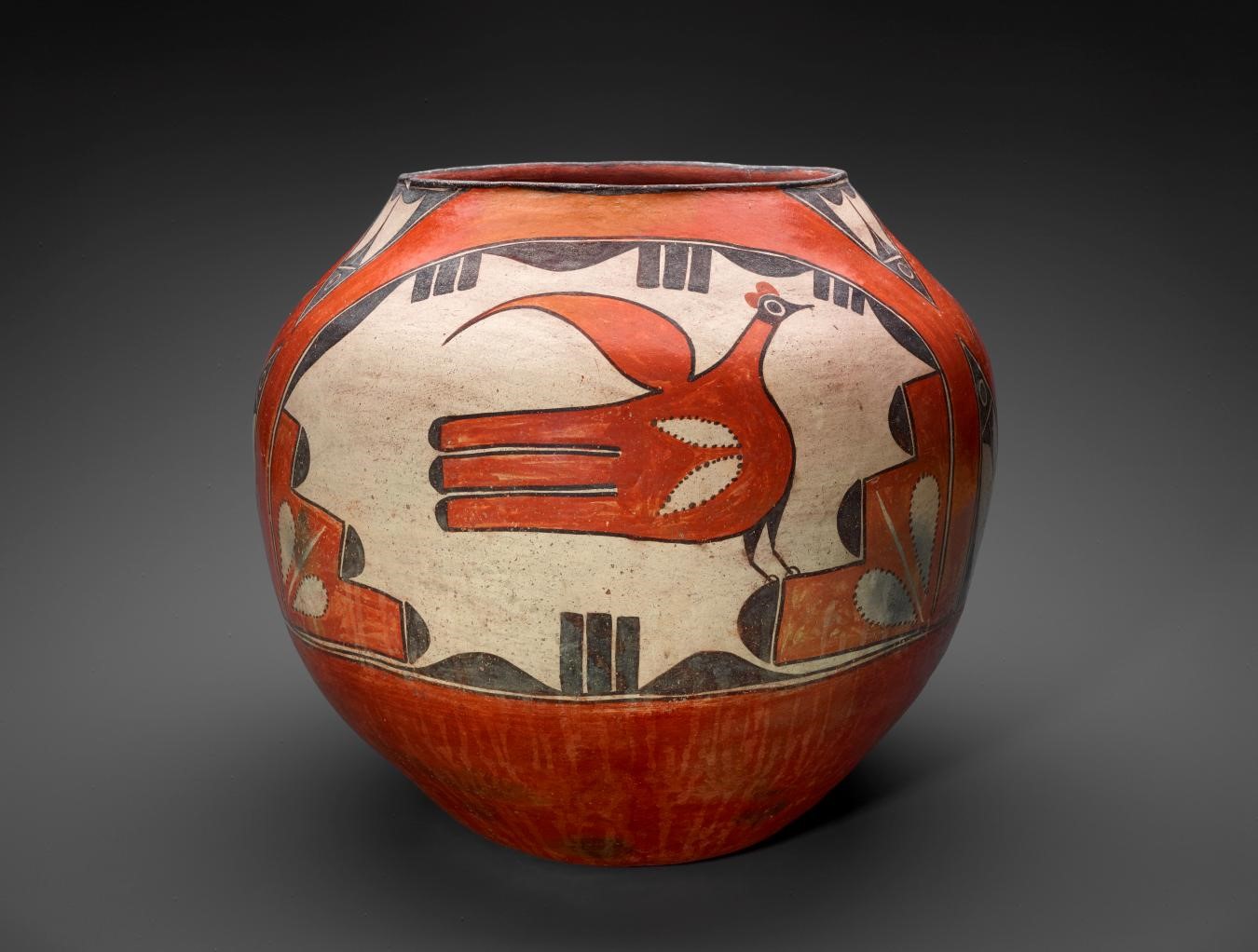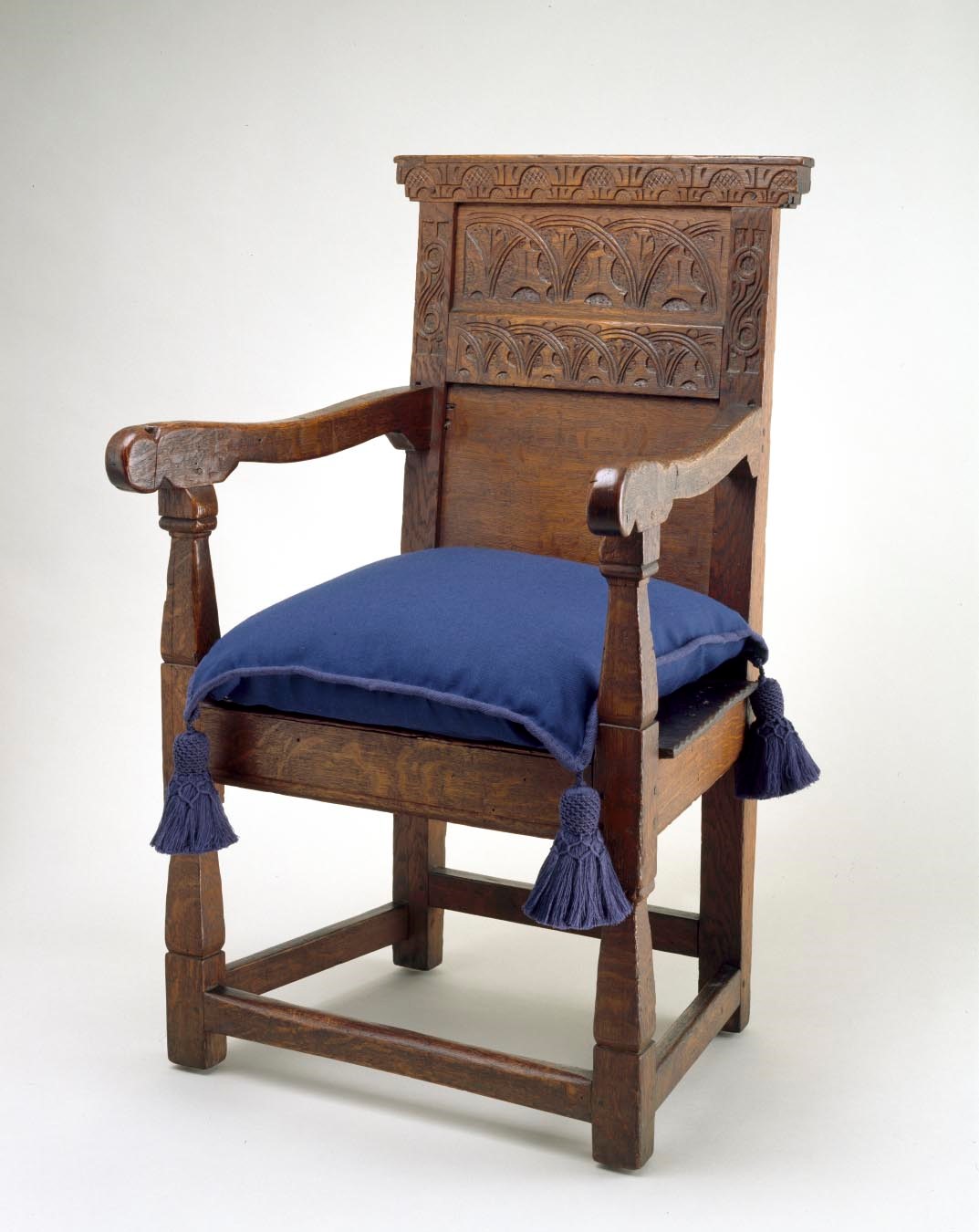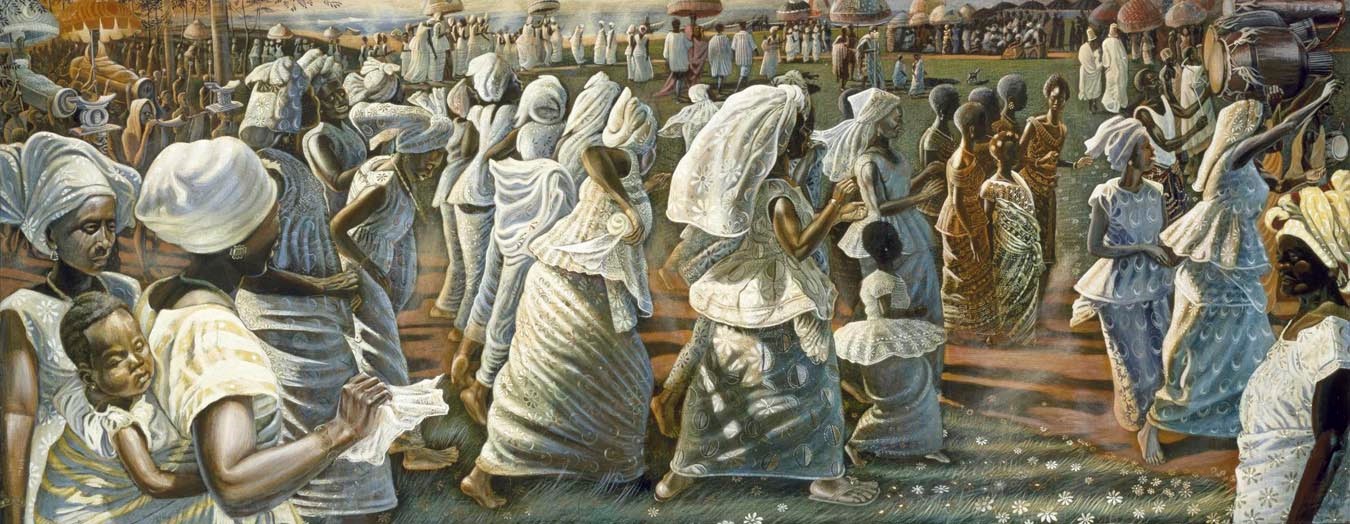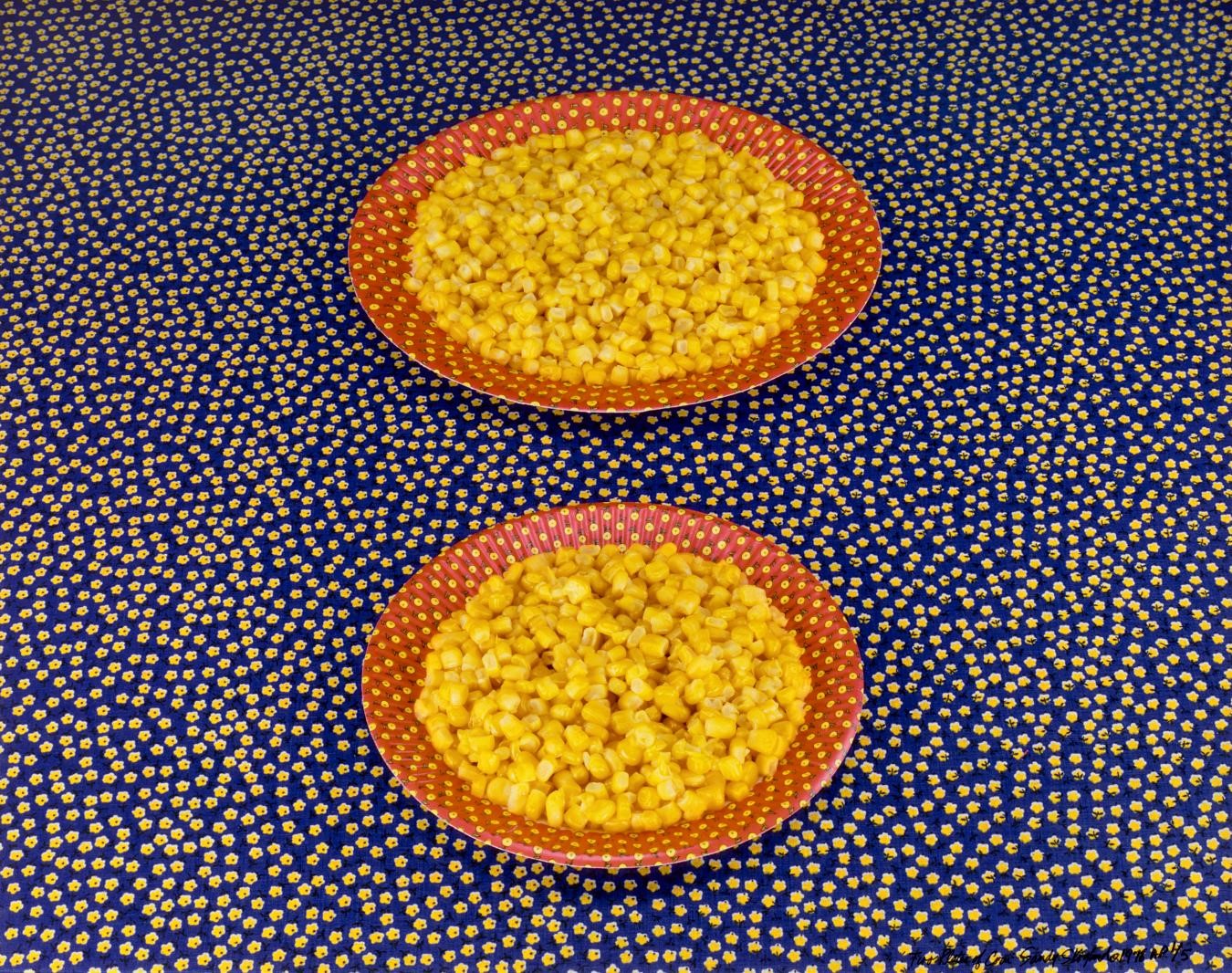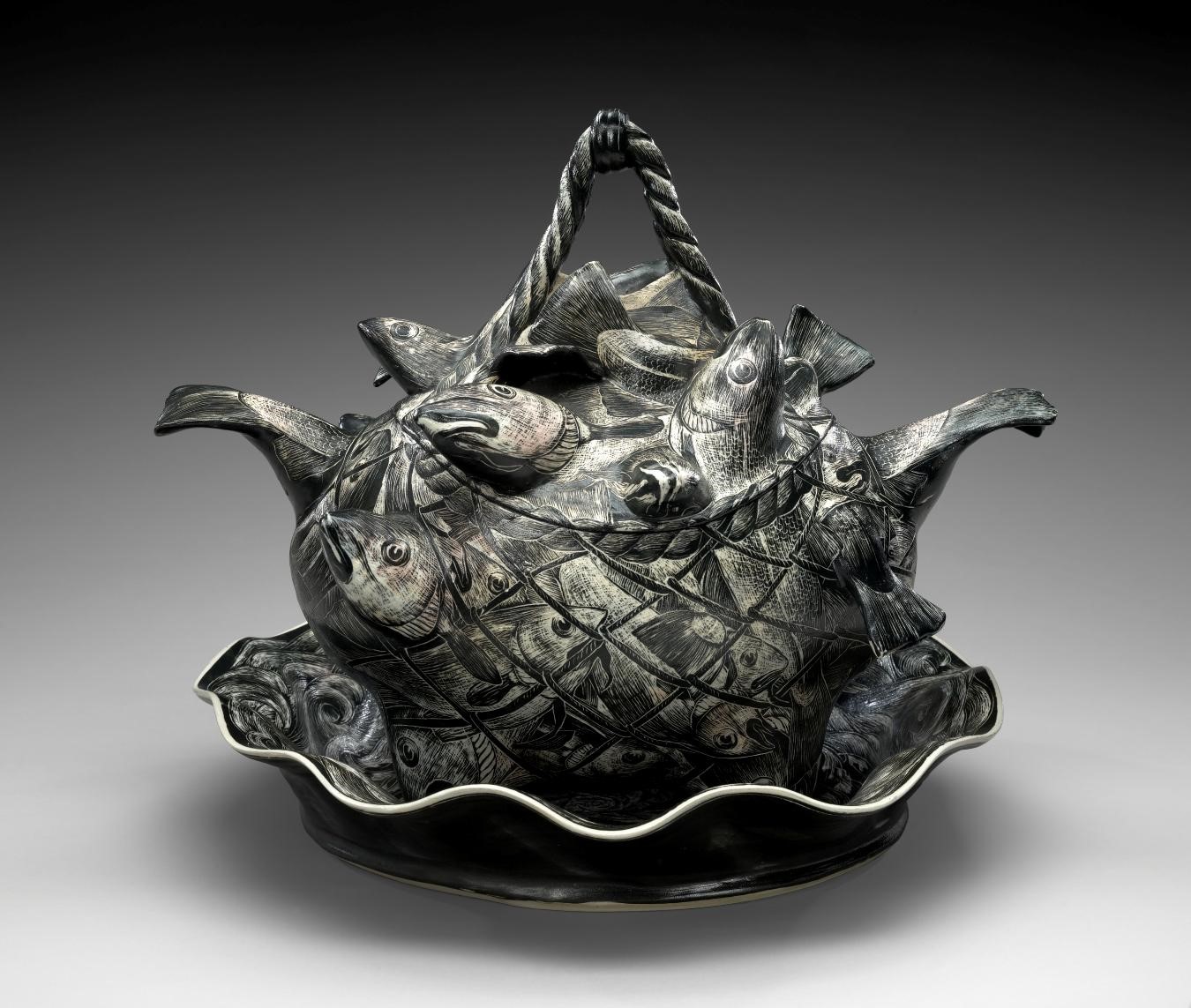Happy Thanksgiving! Curatorial Picks for the Holiday November 17, 2017
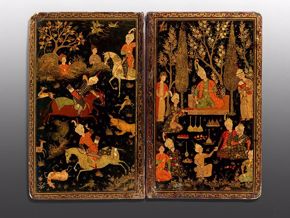
Attributed to Agha Mirak, Book Binding, Iran, late 16th century, watercolor, gold-colored pigments, and lacquer on pasteboard, the Hossein Afshar Collection.
Charles Angrand, The Harvesters, 1892, oil on canvas, the Museum of Fine Arts, Houston, gift of Audrey Jones Beck.
Korean, White Porcelain Jar, 18th century, porcelain, National Museum of Korea.
Zia, Jar with Birds, 1920–30, earthenware with slip, the Museum of Fine Arts, Houston, gift of Miss Ima Hogg.
Essex County, Massachusetts, Great Chair, 1640–85, white oak, the Museum of Fine Arts, Houston, Bayou Bend Collection, Museum purchase funded by Miss Ima Hogg, by exchange.
John Biggers, Jubilee: Ghana Harvest Festival, 1959–63, tempera and acrylic on canvas, the Museum of Fine Arts, Houston, Museum purchase funded by Duke Energy. © John T. Biggers Estate/Licensed by VAGA, New York, NY, Estate Represented by Michael Rosenfeld Gallery
Sandy Skoglund, Two Plates of Corn, from the series Food Still Lifes, 1978, printed 2017, inkjet print, the Museum of Fine Arts, Houston, gift of an anonymous donor. © Sandy Skoglund
David Regan, Fish Tureen, 1992, stoneware, the Museum of Fine Arts, Houston, Garth Clark and Mark Del Vecchio Collection, gift of Garth Clark and Mark Del Vecchio. © David Regan
We celebrate Thanksgiving as an American holiday, but cultures across time have honored the harvest, the season, family, and, of course, tasty food. See what some of our curators say about works of art that evoke similar traditions and values around the world.
Charles Angrand, The Harvesters, 1892
Whenever I see this painting, I am reminded that my paternal grandmother was a farmer’s daughter, born around the time this work was made. Although Charles Angrand painted with the most avant-garde technique of the era, Pointillism, his harvest scene is part of a tradition in European art that reaches back to antiquity. Angrand creates a sun-filled scene, full of harmony and abundance. —Helga Aurisch, curator, European art
Korean, White Porcelain Jar, 18th century, National Museum of Korea
Moon jars, which get that name because of their shape, were often used to hold food or alcohol, and lots of it—making these vessels a natural complement to an American Thanksgiving. Moon jars are created by putting together two hemispheres of clay, a technique that causes them to swell and bloat around their middle when fired in the kiln, thus giving them the full, round profiles for which they are admired. I’m sure the same will be true of me after my Thanksgiving dinner. —Bradley Bailey, Ting Tsung and Wei Fong Chao Curator of Asian Art
Attributed to Aqa Mirak, Book Binding, late 16th century, private collection
Celebrating Thanksgiving outdoors is a Texas treat. I’ll never forget the wonder of my first Thanksgiving picnic in Texas: a warm and welcome contrast to the crowded indoor family feasts of my Northern youth. Hospitality is also legendary across Islamic lands, resonating throughout centuries of literature and art that are filled with open-air celebrations—from lavish banquets to intimate picnics in lush garden settings, as seen in this lacquer book binding on view in Bestowing Beauty: Masterpieces from Persian Lands. —Aimée Froom, curator, Islamic art
Zia, Jar with Birds, 1920–30
Many Native American tribes give thanks throughout the year for things like growing corn, or beneficial creatures like the roadrunner on this jar. November is not only the month of giving thanks, but also Native American Heritage Month. I am reminded of all that our culture owes to the original peoples of the Americas. —Chelsea Dacus, assistant curator for antiquities, the Glassell Collections, and the arts of Africa, Oceania, and the Americas
American, Great Chair, c. 1640–85
Throne-like and brooding, this great chair was made in the 1600s by a craftsman in Essex County, Massachusetts—the heart of Pilgrim country. Thanksgiving was celebrated in the Massachusetts Bay Colony for the first time in 1630, and frequently thereafter until about 1680, when it became an annual festival. I can imagine stepping back in time to see a family sitting around a table with the father seated in this chair, giving thanks for a plentiful harvest. —Remi Dyll, collection manager, Bayou Bend
John Biggers, Jubilee: Ghana Harvest Festival, 1959–63
John Biggers traveled to Africa from Houston in 1957 and was among the first U.S. painters to depict the African continent’s newly liberated nations. With Jubilee: Ghana Harvest Festival, he captures the durbar, or “court,” festival, celebrating earth’s plenty. Biggers powerfully shows us that giving thanks for the harvest, as well as for loved ones, occurs not only in the United States, but also around the globe. —Kanitra Fletcher, curatorial assistant, contemporary art and special projects
Sandy Skoglund, Two Plates of Corn, 1978
Our vision of a perfect Thanksgiving dinner—juicy turkeys, bright vegetables, and perfectly prepared pies—is undeniably shaped by advertising. But, as artist Sandy Skoglund notes, “If you [could] see … what it took to make an advertising photograph … like the photo assistant carefully arranging meatballs, the degree of unnaturalness would be astonishing.” I love how Skoglund plays with her food and uses advertising techniques to produce this unforgettable photograph of two plates of corn, on view in A History of Photography. —Lisa Volpe, associate curator, photography
David Regan, Fish Tureen, 1992
I embrace Thanksgiving as a time to celebrate with friends and family around a table filled with good food. David Regan’s ceramic Fish Tureen, on view in the American art galleries, captures the richness of the “feast” with carved fish seemingly bursting free from a net. Historically, tureens (closed serving dishes) depicting animals were made by the European royal factories of Meissen or Sèvres in the 18th century to alert diners to the fare they were about to eat. —Anna Walker, Windgate Foundation Curatorial Fellow for Contemporary Craft

